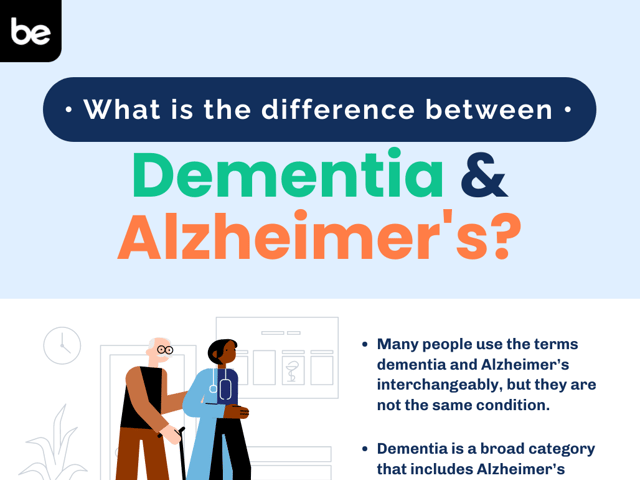
How to Pass the NCLEX-PN
According to the U.S. Bureau of Labor Statistics, 60,700 job openings for licensed practical nurses are projected each year.
Nursing is considered a noble and highly trusted profession. Before entering this rewarding career as an LPN, you must first pass the NCLEX-PN exam.
The thought of an exam standing in the way of becoming an LPN can be daunting. But don’t worry! With enough preparation, you can pass the NCLEX-PN and pursue the career of your dreams.
Find out what to expect on the exam and how our NCLEX-PN study materials can help you pass confidently.
What Is the NCLEX-PN?
The NCLEX-PN exam is also known as the National Council Licensure Examination for Practical Nurses. It is owned and administered by the National Council of State Boards of Nursing, also referred to as the NCSBN.
The exam is taken by students looking to become licensed as practical (LPN) or vocational (LVN) nurses. It is not to be confused with the NCLEX-RN for registered nurses. While registered nurses (RNs) provide direct care to patients, licensed practical nurses typically assist doctors or registered nurses.
The test itself is computer-adaptive, meaning it increases and decreases in difficulty until it is 95% certain of your level of competence. There are between 85 to 205 questions, including 25 experimental questions not counted towards your final score.
The questions on the NCLEX-PN exam are designed to assess your understanding of “client needs.” Most questions are given as multiple-choice and may utilize audio, graphics, and charts.
You may also encounter ordered response questions, fill-in-the-blank, and hot spot questions during the exam. The latter requires you to select an area on an image as your answer.
Who Can Take the NCLEX-PN Exam?
To take the NCLEX-PN exam, you must first complete a series of steps:
-
Earn a high school diploma or GED
-
Graduation from an approved LPN/LVN education program
-
Apply for authorization for the NCLEX-PN exam
-
Schedule your NCLEX-PN exam
-
Wait for your results
-
Start workings as an LPN
Each nursing regulatory body (NRB) has its eligibility requirements. Contact the NRB where you intend to work for more information.
Licensed practical nurses provide primary nursing care in various settings, including nursing homes, hospitals, physicians’ offices, and private homes.
How Long Is the NCLEX-PN Exam?
The NCLEX-PN exam has a total allotted time of five hours. This time includes an instructional video before the exam, the 25 experimental questions, and two preprogrammed optional breaks.
The first break is available two hours into the exam, while the second break can be taken three and half hours in. You should take the breaks to have a quick stretch, have a snack, and use the bathroom.
What to Expect on the NCLEX-PN Exam
The NCLEX-PN exam is divided into four main categories, two of which are further subdivided. Each category and subcategory has a percentage attached which outlines the distribution of content for the exam.
The distribution of content is as follows:
Safe and Effective Care Environment
Health Promotion and Maintenance (6%–12%)
Psychosocial Integrity (9%-15%)
Physiological Integrity
Note that the actual exam does not categorize these sections. The test will automatically stop once you’ve answered the minimum number of questions required to pass the NCLEX-PN exam.
How Hard Is the NCLEX-PN Exam?
Tests are designed to be challenging, and the NCLEX-PN exam is no exception. While it’s designed to be difficult, it isn’t impossible.
The purpose of the exam is to determine whether you can provide safe and effective care for patients. To pass the NCLEX-PN with flying colors, you must prove that you are knowledgeable in patient care and have the essential skills required to enter the field of practical nursing safely.
The difficulty of the exam is based on your performance. The better you do, the more complex the questions will be – this is a good sign! At the same time, if your questions appear to remain simple, it may be a sign that you’re not performing as well as you hoped.
The computer will stop providing you with questions when it is 95% certain that your ability is above or below the passing standard. The number of questions you answer will vary. You can receive between 85 and 205 questions.
While it is possible to fail after the computer stops at 85 questions, this rarely happens. It’s almost the opposite. The better you perform, the fewer questions you’ll be required to answer.
Tips for Passing the NCLEX-PN
Unless you can see into the future, it’s hard to know exactly how to pass the test. But fear not; there are proven exam-taking strategies that can put you in the best position to take the test confidently.
With enough preparation and a little help from this guide, nothing should stop you from passing the NCLEX-PN exam.
Here are some valuable NCLEX-PN strategies that work.
Understand the NCLEX-PN Exam Format
To avoid a surprise on testing day, familiarize yourself with the NCLEX format.
The NCLEX-PN exam is a computerized adaptive exam, otherwise known as CAT. This testing format is tailored and adapts to your ability level. The questions you receive are adjusted in their level of difficulty.
There are many advantages to CAT compared to other testing methods. One of the significant benefits is its ability to adapt to performance. CAT will become easier if you are struggling and more difficult if you’re performing well.
Unless you have previously taken the exam, this might be your first time with this adaptive format. To better understand how it works, ask peers who have completed the exam before. They can give you some insight into how it works and tips or tricks to help you.
Identify Your Study Style
Identifying your learning style will help you know the best ways to prepare for an exam. There are four main types of learning styles:
-
Visual
-
Auditory
-
Kinesthetic
-
Read/Write
Once you have figured out your learning style, you should adapt your methods accordingly. Remember that you may have more than one learning style.
Visual learners perform best when they can visualize information through drawings, photos, and charts. One learning strategy might involve watching videos online that discuss information about your exam.
Auditory learners process information through their sense of hearing. One learning strategy might involve speaking aloud as they study for the test. This may include repeating keywords or reading out essential phrases.
Kinesthetic learners absorb information through physical movement and touch. It is a tactile style of learning. One learning strategy might involve creating bodily movements for certain words or acting out concepts relevant to the exam.
Read/write learners learn best by reading and writing out information. One strategy may involve rewriting test prep notes. While it may seem counterintuitive, the physical act of putting pen to paper forces your brain to process information in a more detailed way.
Create a Personalized Study Plan
A study plan is an organized schedule outlining study times, work/personal commitments, and learning goals. You should create a personalized study plan that sets aside dedicated time each week for studying.
Remember, your study schedule shouldn’t just be about studying. Plan your schedule to include breaks, sleep, social engagements, and any work commitments you may have.
Once you have completed your study plan, here are some tips for achieving your study goals:
-
Plan enough time for studying each topic
-
Study at a set time and in a consistent place
-
Utilize odd hours during the day for studying
-
Limit your study time to two hours at a time
-
Keep your notes organized
-
Leave some unscheduled time for flexibility
While it’s important to stick to your plan, know that it isn’t set in stone. Unexpected events arise; you might get called into work, or there is a family emergency.
Allow for some flexibility, and when something does happen, it won’t affect your study (or your stress levels).
At the end of each week, take the time to review your study plan and make adjustments where necessary.
Take NCLEX-PN Practice Tests
When taking the NCLEX-PN, don’t rely on past exams. The NCLEX changes significantly every three years, so previous exams may not be up-to-date.
The nursing field is constantly changing, so it makes sense that the exam keeps up with the latest updates and trends. Instead of relying on previous exams, take advantage of NCLEX-PN practice tests.
Prep questions will be one of the best resources you utilize during your study. Union Test Prep’s free NCLEX-PN practice test will ensure you are prepared to succeed on your testing day.
Practice tests can help simulate the testing experience and boost your performance on exam day. You will want to complete at least two NCLEX practice tests before sitting for the actual exam.
Utilize NCLEX-PN Prep Guide
If there’s any way to determine what is on the test, it’s by reading an NCLEX-PN prep guide. A prep or study guide is a condensed version of all of the important information you need to know. Use study guides to identify knowledge gaps and let them guide your study plan.
Union Test Prep’s free study guides for the NCLEX-PN exam will tell you about the most important concepts in each section. If there are still concepts that confuse you, you can also seek additional information.
Study guides are an effective study material that works best when combined with other learning techniques, including practice tests and flashcards.
Take Advantage of Alternative Study Resources
Flashcards are a powerful tool to help you memorize facts fast. Nurses depend on their knowledge of medical terminology to record a patient’s medical history and write notes regarding a patient’s progress.
Union Test Prep’s free flashcards for the NCLEX-PN exam are a fun and effective way to learn (and remember) tricky terminology and concepts.
Through active recall, you quickly grasp and retain medical terminology. Using flashcards also utilizes spaced learning. Spaced repetition learning is effective for long-term memory when study sessions are spaced out instead of crammed into one night.
Be Prepared for Exam Day
The night before your exam, get a good rest and eat a healthy breakfast in the morning. A well-rested student with a nourished body is more likely to stay fresh and alert throughout the exam than those who aren’t.
On the day of the test, remember to:
-
Dress comfortably
-
Know the NCLEX candidate rules
-
Bring your ID card
-
Arrive early
-
Provide your biometrics
-
Receive your materials
-
Set your pace
Exam results are available from your nursing regulatory body (NRB). You can expect to get your official results approximately six weeks after taking the exam.
In some cases, you may be able to access your unofficial results days after taking the exam. Remember, the NCLEX quick result is not official and can’t be used to practice as a licensed practical nurse.
Pass Your Exam With the NCLEX-PN Study Guide
While it might seem like you’ve been studying forever, there’s finally light at the end of the tunnel! With one final exam, you can pursue your long-awaited career as a practical nurse.
With our NCLEX-PN survival tips, you can feel confident to pass the exam with confidence.
Union Test Prep’s free NCLEX-PN study guide is an excellent starting point to determine the most important information you need to know. You can use our study guides to identify knowledge gaps and let them guide your personalized study plan.
While study guides are an effective study material, they work best when combined with other learning techniques, including our free practice tests and flashcards.
Get started with Union Test Prep’s NCLEX-PN exam study materials today.
Keep Reading

National Council Licensure Examination-Practical Nurse Blog
How Long Should I Study for the NCLEX-PN?
For aspiring nurses, the NCLEX-PN is a critical hurdle on the path to b…

National Council Licensure Examination-Practical Nurse Blog
How to Become an LPN
Would you like to average $30 dollars per hour in a rewarding full-time…

National Council Licensure Examination-Practical Nurse Blog
What Is the Difference between Dementia and Alzheimer’s?
Many people use the terms dementia and Alzheimer’s interchangeably, but…